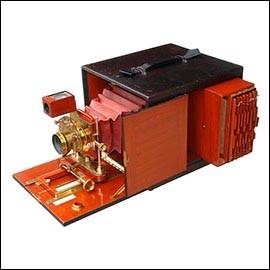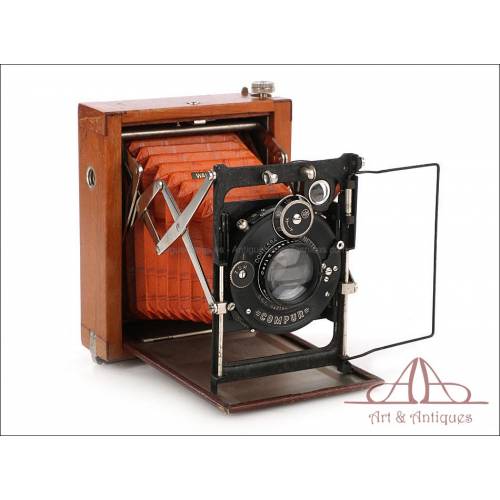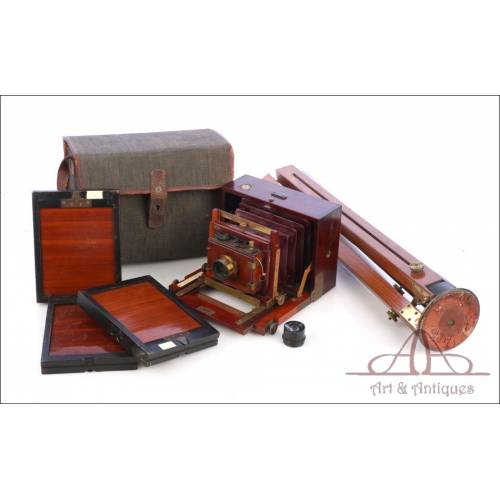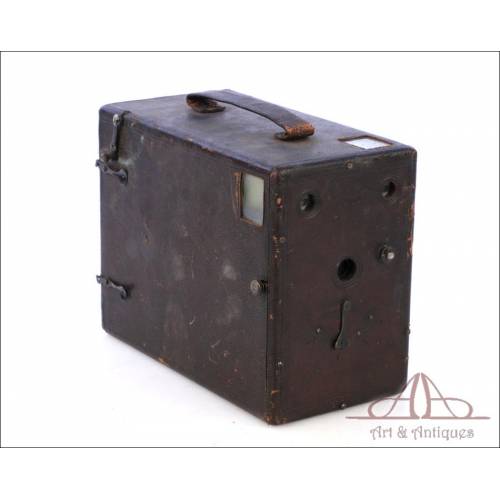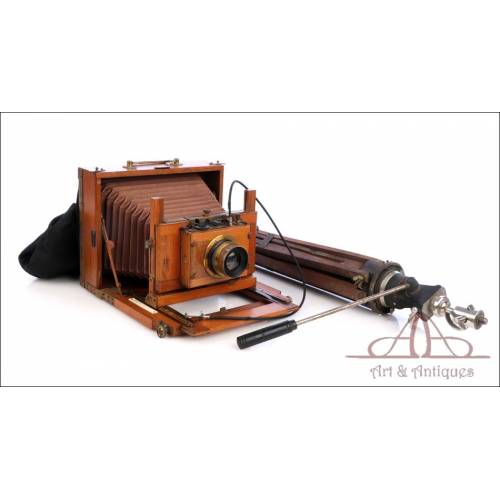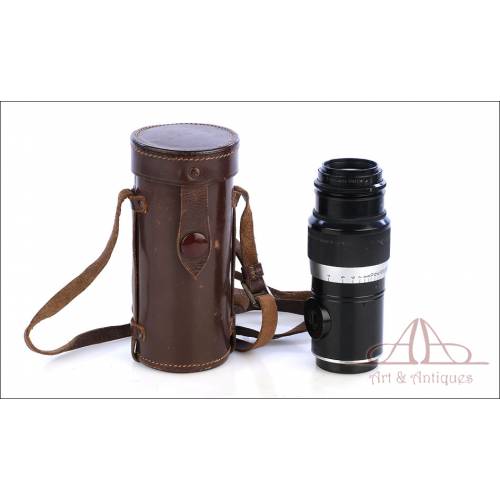Antique cameras
If there is a collector's item that raises passions among antique lovers, it is antique cameras. The art of photography is, in itself, fascinating. Decades ago, capturing images on plates or sheets of paper thanks to the action of light seemed like magic; and today it continues to arouse our admiration. Digital cameras have definitively left beh...
If there is a collector's item that raises passions among antique lovers, it is antique cameras. The art of photography is, in itself, fascinating. Decades ago, capturing images on plates or sheets of paper thanks to the action of light seemed like magic; and today it continues to arouse our admiration. Digital cameras have definitively left behind the charm of the printing process, in which the photographed images gradually emerged on a sheet of paper impregnated with emulsion. However, there are still many people who love antique cameras, collect them and use them to take snapshots. They are very special images, with an intense power of attraction that no digital photography has ever been able to match.
History of antique cameras
The history of cameras has a much older origin than photography itself. To trace its beginnings we must go back to the fourth century BC, when the Chinese philosopher Mozi laid the foundations for the operation of the camera obscura. Over the centuries more scientists became interested in optics and image reflection; in the 11th century, the Arab physicist Ibn al-Haytham wrote important treatises reflecting experiments in a dark room, into which light entered through a small hole. However, it was not until 1816 that the first photographic camera in history was built. Its creator was Nicéphore Niepce, who managed to make some snapshots on paper impregnated with silver chloride, one of which (View from the window at Le Gras, 1826-27) has survived to the present day.
Throughout the 20th century, the evolution of vintage cameras to the designs we know today has been truly dizzying. Milestones such as the appearance of the first camera with built-in film (designed by George Eastman in 1885), Polaroid's instant photographs (introduced in 1947) or the launch of digital cameras (the first model was designed by engineer Steven J. Sasson in 1975 for Kodak, although it was not intended for commercialization) are key in the history of photographic cameras. Today, the final evolution has reached cell phone cameras, which are capable of delivering extremely high quality images with the ability to perform on-the-spot editing.
Types of antique cameras
Antique photo cameras, meaning those manufactured and marketed before the 1960s, come in different formats and types. The most important ones are:
Antique plate cameras
They were the first to appear on the market. Initially, the only people who had access to them were photographers, as they were a necessary investment for the practice of their profession. People went to the studio to have their portraits taken at important moments in their lives: baptisms, weddings, deaths... They were usually bellows or folding cameras, bulky pieces that were placed on a tripod. These cameras were used until the 1930s, when they were definitively displaced by film models.
Antique cameras with film.
As we have discussed, the first roll film camera was designed by George Eastman in 1885 and marketed by his company, Kodak. With logical improvements developed over the decades, these cameras maintained their design throughout the 20th century, until the advent of digital technology. A good example of their magnificent performance are the Leica antique cameras, true icons of photojournalism that still have legions of fans today, and that many photographers continue to use. Within the antique cameras with film, the Leica firm developed the first model for 35 mm film in 1925, which would become the most common format.
Within the world of vintage photography, in addition to cameras we can also find other antique photographic devices that arouse the interest of amateurs and professionals. Lenses, viewfinders, tripods and camera accessories, along with projectors and antique viewfinders for stereoscopic photography, make up a universe of exclusive items that today still retain all their power of fascination.
Rare Antique Contessa-Nettel Tropical Plate Photo Camera. Germany, Circa 1920 Rare Antique Contessa-Nettel...
Exclusive Contessa-Nettel Tropical Plate photo camera. In amazing condition. Collectors piece. Exclusive Contessa-Nettel Tropical...
750,00 €Complete Antique Photo Equipment with Two Lenses, Suitcase and Tripod. Circa 1900 Complete Antique Photo Equipment...
Superb photo equipment with tripod, lenses and storing suitcase. Very complete and in excellent condition. Superb photo equipment with tripod,...
SoldAntique Box Photo Camera. Circa 1920 Antique Box Photo Camera. Circa...
Antique box photo camera original from the 1920s. A very special piece with a great charm. Antique box photo camera original...
SoldAntique Photographic Equipment with Carl Zeiss Lens. Circa 1900 Antique Photographic Equipment...
Complete turn-of-the-century photographic equipment. Carl Zeiss Jena lens. With antique tripod in good condition. Complete turn-of-the-century...
SoldAntiguo Objetivo Hektor de Montaje de Rosca para Cámara Leica. 1937 Antiguo Objetivo Hektor de...
Objetivo Hektor F=13,5 1:4,5 para cámara Leica. Montaje de Rosca. Con estuche de piel original. Objetivo Hektor F=13,5 1:4,5 para...
Sold
New products
-

Antique ivory and silver plated stethoscope, late 19th century
Antique stethoscope from the late 19th century in silver-plated metal...
-

Vintage pendant with shell cameo of Jesús del Gran Poder, carved c. 1970
Vintage pendant with a shell-carved cameo of Jesus del Gran Poder, circa...
-

Antique Roman Style Gilded Silver Chalice with Paten. France, 1932
Antique Roman-style chalice in gilded silver with paten. France, 1932....
-

Beautiful Antique 18 K Gold Ring with 7 Natural Diamonds
Antique 18K gold ring with 7 natural diamonds. Delicate openwork design,...
-

Antique Silver Reliquary. José Vilaplana. Valencia, Spain. Circa 1920
Impressive repoussé silver reliquary by José Vilaplana, Valencia, c....
-

Vintage 18K Gold Ring with 7 Natural Diamonds
Vintage 18K gold ring with seven natural diamonds in floral setting....
-

Antique Silver Chalice. Enameled Crosses. Valencia, Spain, 1942
Spanish chalice from 1942 in solid silver, gifted by the Church of...
-

Antique Silver Chalice and Paten. Granada Spain, circa 1900
Spanish chalice in white silver with matching paten, handcrafted....
Specials
-

Antique Solid Silver Waltham Pocket Watch. USA-England, 1912
Elegant antique silver pocket watch...

